| Fredag
19. april 2024 Vi reiste til Rotterdam en dag før cruiset begynte. Så fikk vi ser litt mer av byen. Togene til Oslo Lufthavn hadde problemer igjen, så vi tok flybussen fra Oslo. Heldigvis hadde vi god tid. |
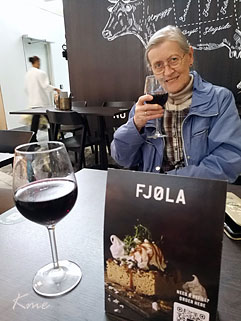 Et glass rødvin på Fjøla på Gardermoen |
| Det
var trangt om plassen på toget fra Schiphol. Vi kom ikke med det første toget, men klarte å trenge oss på det neste. Der sto vi som sild i tønne. I Rotterdam var det det gangavstand fra stasjonen til Postillion Hotel & Convention Centre WTC Rotterdam (postillionhotels.com) hvor vi skulle bo den første natta. |
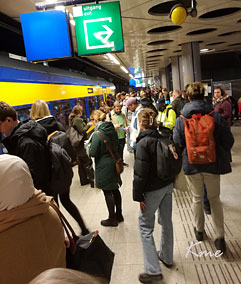 Jernbanestasjonen på Schiphol. |
Formiddagen gikk vi omkring i Rotterdam.
Ved 16-tida gikk vi ombord i Normandie.
Fra programmet:
Det er mulig å gå ombord på MS Normandie fra klokka 16 00.
Rotterdam er en by med mange sider. Det er en svært viktig havneby,
en populær by i kunstneriske kretser, og det er arkitektonisk en svært
interessant by, Dessuten er det en by med rike handlemuligheter.
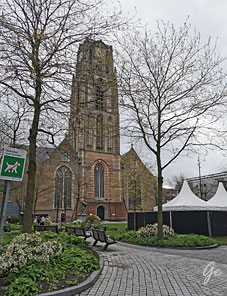
after the national capital of Amsterdam. It is in the province of South Holland, part of the North Sea mouth of the Rhine–Meuse–Scheldt delta, via the "New Meuse" inland shipping channel, dug to connect to the Meuse at first and now to the Rhine.
Rotterdam's history goes back to 1270, when a dam was constructed in the Rotte.
In 1340, Rotterdam was granted city rights by William IV, Count of Holland.
The Rotterdam–The Hague metropolitan area, with a population of approximately 2.7 million, is the 10th-largest in the European Union and the most populous in the
country.
other Dutch cities. The heart of Rotterdam was almost completely destroyed by the Luftwaffe.
Rotterdam was gradually rebuilt from the 1950s through to the 1970s. Because the city centre was largely destroyed, new spatial infrastructure could be built, making
it an open and modern city. (9. mai 2024)
Rotterdam - Wikipedia

| The Regentessebrug (1899)
over the Wijnhaven quay was designed by the city architect D.B. Logemann. This bridge is a national monument and is the only physical reminder of the greatness of Wijnhaven before the war. The bridge has beautiful decorations and draws inspiration from the monumental bridges in 19th-century Paris, like the Alexandre-III Bridge, which were very popular at that time. At that time, Amsterdam already had two monumental bridges inspired by the French style, the Blauwbrug and the Hogesluis. But Rotterdam didn’t have one yet, and they wanted to change that. (9. mai 2024) Regentessebrug Rotterdam (rotterdam360.com) |
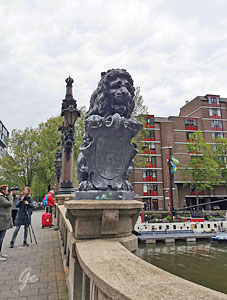 |
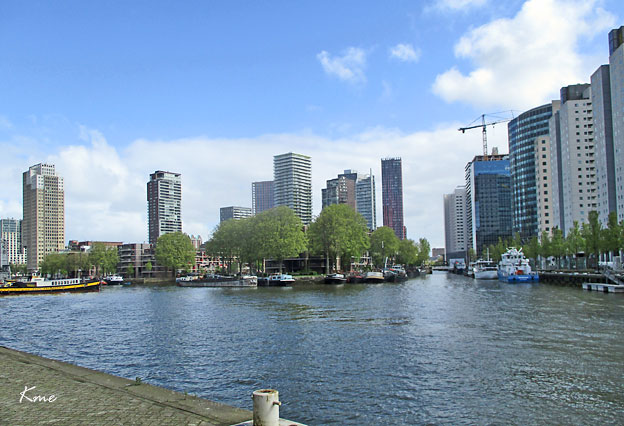
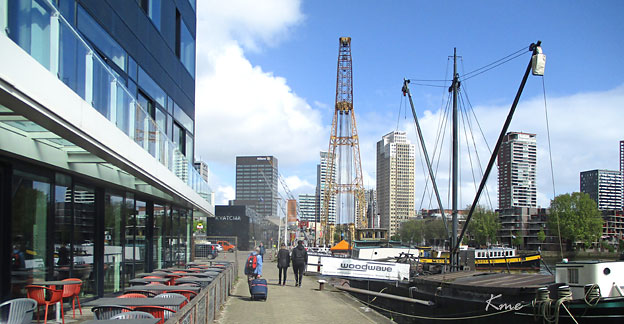
Vi måtte dra på koffertene våre fram til kl 12.
Da kunne vi sette dem inn på båten.
| Etter
en enkel lunsj gikk vi til Rotterdam Maritime Museum. Rotterdam Maritime Museum sheds light on the often invisible maritime world. Addressing a broad public, it tells the frequently surprising story of the past, present and future of the maritime sector and the impact it has on society at large. |
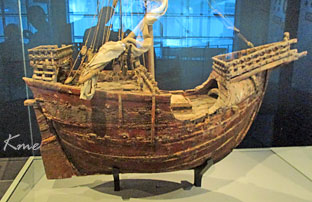 Mataro |
Mataró Model
Enigmatic, a rich source of knowledge and unparalleled in its beauty.
It is the oldest ship model in Europe, dating back more than six centuries.
And it has been made extremely accurately.
According to the story, the model takes its name from the chapel it came
from in Mataró, a coastal town north of Barcelona. It is the oldest known
ships model in Western Europe. (9. mai 2024)
Mataró Model - Maritiem Museum Rotterdam
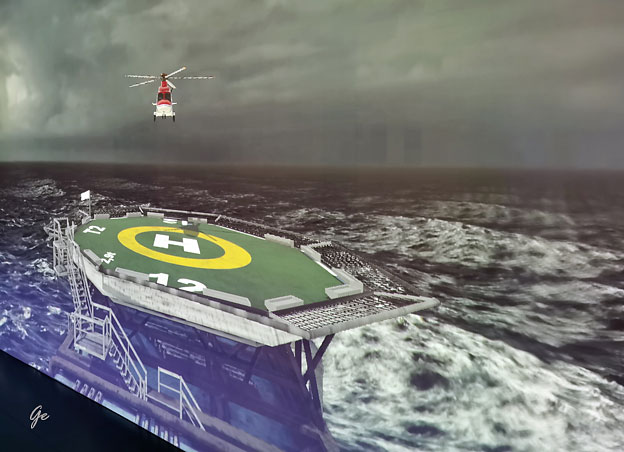
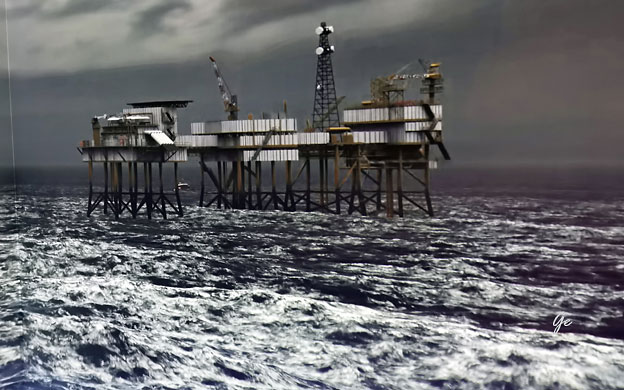
Experience how drillers, crane operators, windmill specialists and helicopter pilots do their spectacular work at sea. Who manages to guide the helicopter to the platform?
Offshore Experience - Maritiem Museum Rotterdam
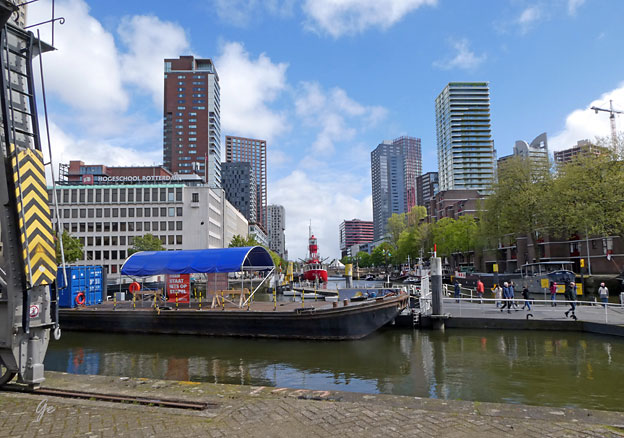
Rotterdam havn sett fra det Maritime Museet
 |
 |
Den lå ikke der vi hadde fått opplyst at den skulle ligge.
Det ble et stykke å gå langs brygga, men vi fant den til slutt.
Vi leverte koffertene våre og satt oss på en cafe like ved båten.

Normandie. Her fotografert mellom Leerdam og Utrecht
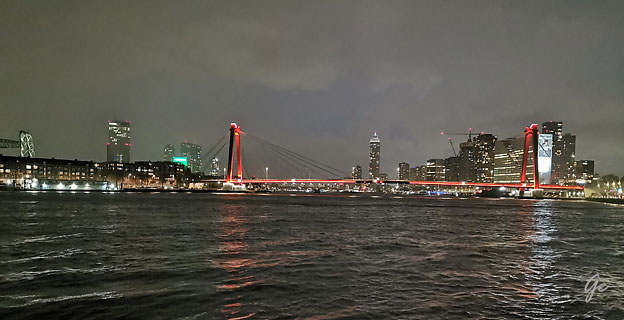
Resten av dagen var vi ombord.
Bildet viser Erasmus-broa.
The Erasmusbrug (English: "Erasmus Bridge") is a combined cable-stayed
and bascule bridge, construction began in 1986 and was completed in 1996.
It crosses the Nieuwe Maas in the centre of Rotterdam, connecting the north
and south parts of this city, second largest in the Netherlands.
The bridge was named in 1992 after Desiderius Erasmus, a prominent Christian Renaissance humanist also known as Erasmus of Rotterdam. The
Erasmus Bridge is Rotterdam's most important landmark and is even part
of the city's official logo. (9. mai 2024)
Erasmusbrug - Wikipedia
Søndag 21. april 2024
Fra programmet:
Dagens sykkeletappe følger havnefronten via Krimpen aan den Ijssel til Kinderdijk.
Det er her dere finner den mest berømte gruppen vindmøller i Nederland. De 19
godt bevarte møllene, som er fra 1700-tallet, er opptegnet på UNESCOs
verdensarvliste.
Dere sykler videre gjennom det såkalte "polder"-område, Albwasserwaant.
"Polder" er den nederlandske betegnelsen på et område med lavtliggende land, som
er gjennvunnet fra havet og beslyttet av diker - hvilket kjennetegner store områder i Nederland.
Dere når fram til Dordrecht, som anses å være Nederlands eldste by. Med omkring
1000 historiske bygninger som huser alt fra restauranter, museer og teatre, vil byens
rike historie og det stemningsfulle havneområdet fortrylle dere.
Ca 40 km
| The Dutch hub system for
individual bike tours. Carefree cycling from junction to junction The junction system is a network of cycle paths with fixed numbered points and uniform, clearly visible signage between the individual junctions. Junctions are located at intersections or junctions. They are recognizable by white signs with a green border. You can easily cycle through these junctions on routes of tourist interest and scenic beauty. The routes are signposted in both directions. (9. mai 2024) All information about the node system in the Netherlands (holland-aktiv.com) |
 Knoptenpunkt-Schild |
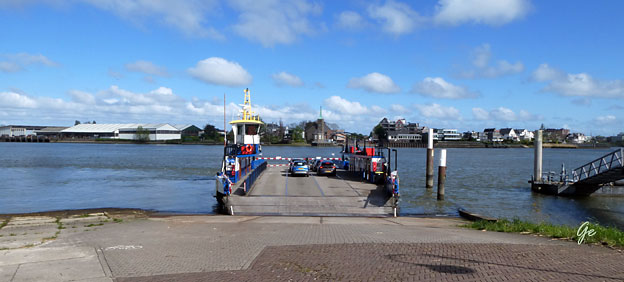
 Ferga Kinderdijk |
Ferga Kinderdijk går mellomg Kiderdijk og Krimpen an de Lek |
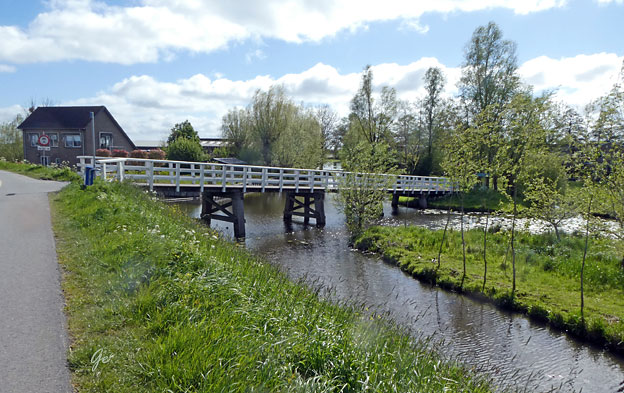
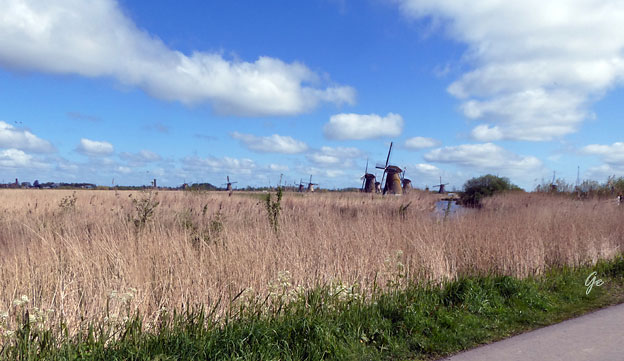
Kinderdijk
of 1421, the Grote Hollandse Waard flooded, but the Alblasserwaard polder stayed unflooded. It is often said that when the horrendous storm had subsided, a villager
went to the dike between these two areas to inspect what could be salvaged. In the
distance he saw a wooden cradle floating on the water. As it came nearer, some
movement was noted, and upon closer investigation, a cat was found, trying to keep
it in balance by leaping back and forth in such a manner that water couldn't flood
the cradle. As the cradle eventually came close enough to the dike for a bystander to
pick up the cradle, he saw that a baby was quietly sleeping inside it, nice and dry.
The cat had kept the cradle balanced and afloat. This folktale and legend has been published as "The Cat and the Cradle" in English. (9. mai 2024)
Kinderdijk - Wikipedia
In the Alblasserwaard, problems with water became more and more apparent in the 13th century. Large canals, called weteringen in Dutch, were dug to get rid of the excess water in the polders. However, the drained soil continued to subside, while the level of the river rose due to the river's sand deposits. After a few centuries, an additional way to keep the polders dry was required. (9. mai 2024)
Kinderdijk - Wikipedia

It was decided to build a series of windmills, with a limited capacity to bridge water
level differences, but just able to pump water into a reservoir at an intermediate level between the soil in the polder and the river.
The reservoir could be pumped out into the river by other windmills whenever the
river level was low enough; the river level has both seasonal and tidal variations.
Although some of the windmills are still used, the main water works are provided
by two diesel pumping stations near one of the entrances of the windmills site.
(9. mai 2024)
Kinderdijk - Wikipedia
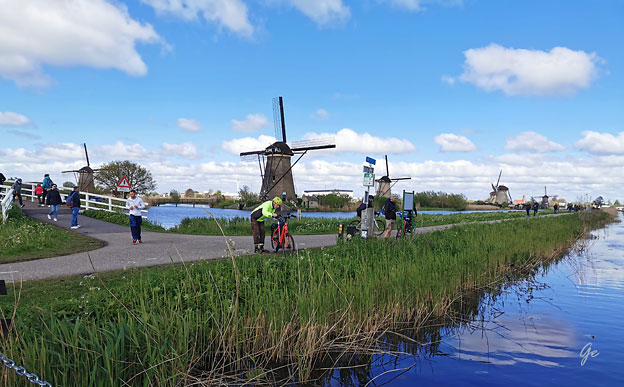
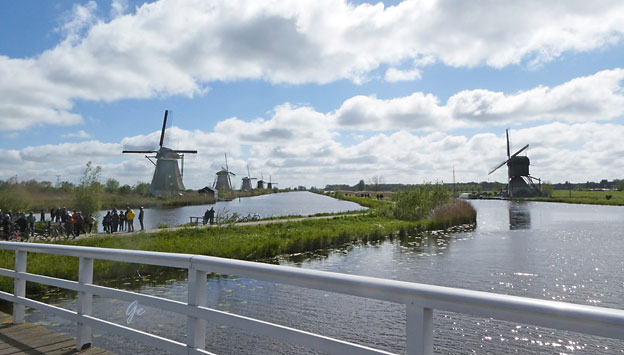
The name Dordrecht comes from Thuredriht (circa 1120), Thuredrecht (circa 1200). The
name seems to mean 'thoroughfare'; a ship-canal or river through which ships were pulled
by rope from one river to another, as here between the Dubbel and the Merwede. Earlier etymologists had assumed that the 'drecht' suffix came from Latin 'trajectum', a ford, but
this was rejected in 1996.[6] The Drecht is now supposed to have been derived from
'draeg', which means to pull, tow or drag. Inhabitants of Dordrecht are Dordtenaren (singular: Dordtenaar). (9. mai 2024)
Dordrecht - Wikipedia

Dordrecht
Mandag 22. april 2024
Fra programmet: Denne dagen byr på den vakre Nasjonalparken Biesbosch, som
dere kommer til etter en kort fergetur. Her møtes flere elver og danner et enormt ferskvannsdelta på intet mindre enn 8000 hektar. Før dere fortsetter sykkelturen
kan dere nyte en vidunderlig seiltur i området. Turen går herdra videre gjennom
Rhin-deltaområdet og krysser over til Gorinchem med vanntaxi. Dette er en liten,
men svært sjarmerende by med en malerisk gammel bydel som definitivt er verdt
et besøk.
Denne dagen ble ikke helt som planlagt. Ferga over til nasjonalparken var ute av
drift. Vi sykla til fergeleie (ca 10 km), ventet en stund der. Så fikk vi beskjed at
vi måtte tilbake til MS Normandie, som fortsatt lå i Doortrecht.
Så da ble det elvecruising fra Doortrecht til Gorinchem.

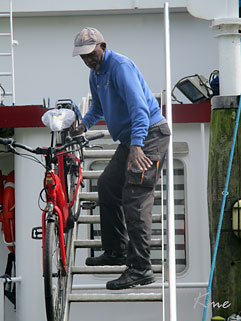 |
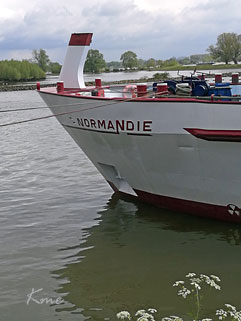 |
Det ble en ekstra jobb for mannskapet på båten også.
Først alle syklene ombord i Doordrecht,
så alle på land igjen i Gorinchem
Gorinchem = Gorkum
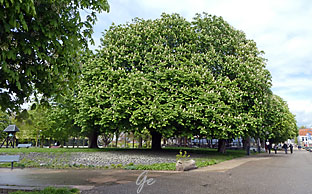 It is generally assumed that Gorinchem was founded c. 1000 AD by fishermen and farmers on the raised land near the mouth of the river Linge at the Merwede. Goriks Heem ("Home of Gorik" in early Middle Dutch) is first mentioned in a document from 1224 in which Floris IV granted people from Gorinchem exemption of toll payments throughout Holland. (9. mai 2024) Gorinchem - Wikipedia |
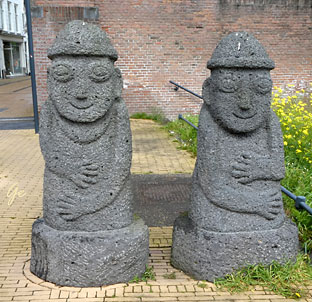 A dol hareubang 'stone grandpa'), also called tol harubang, hareubang or harubang, is a type of large rock statue found on Jeju Island off the southern tip of South Korea. They are considered to be gods offering both protection and fertility and were placed outside of gates for protection against demons travelling between realities. (9. mai 2024) Dol hareubang - Wikipedia |
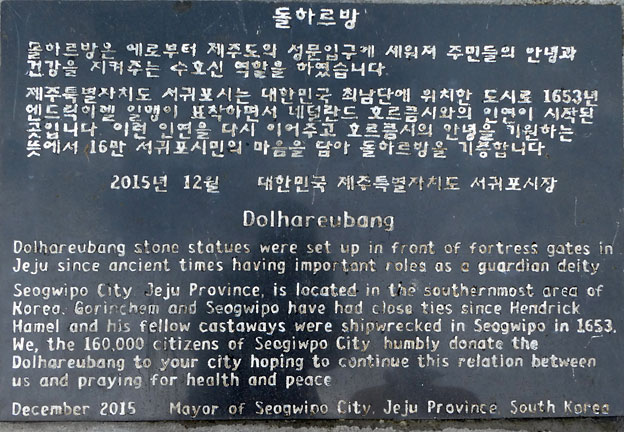
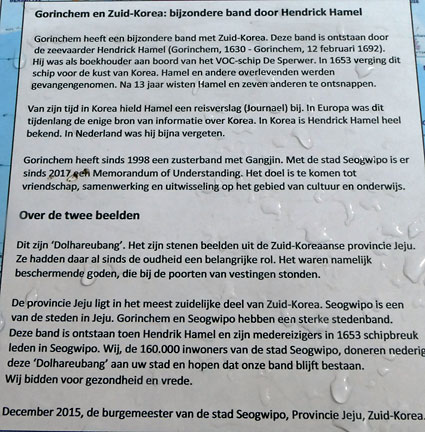
Hamel kept a journal of his time in Korea. In Europe, this was for a long time the only
source of information about Korea. Hendrick Hamel is very well known in Korea. In the Netherlands he was almost forgotten.
Gorinchem has had a sisterly relationship with Gangjin since 1998. Since 2017, there has been a Memorandum of Understading with the city of Seogwipo. The aim is to achieve freedom, cooperation and exchange in the field of culture and education.
These are "Dolharebang". They are stone statues from the South Korean province of Jeju. They had important gods there since ancient times, who stood at the gates of fortresses.
Jeju Province is located in the southernmost part of South Korea. Seogwipo is one of the cities in Jeju. Gorinchem and Seogwipo have a strong twinning of cities.
This bond was formed when Hendrick Hamel and his fellow travelers were shipwrecked in Segowipo in 1953. We, the 160000 inhabitants of the city of Segowipo, humbly donate this "Dolhareubang" to your city and hope that our band will continue to exist. We pray for health and peace
December 2015, de burgemeester van de stad Seogwipo, Provincie Jeu, Zuid-Korea
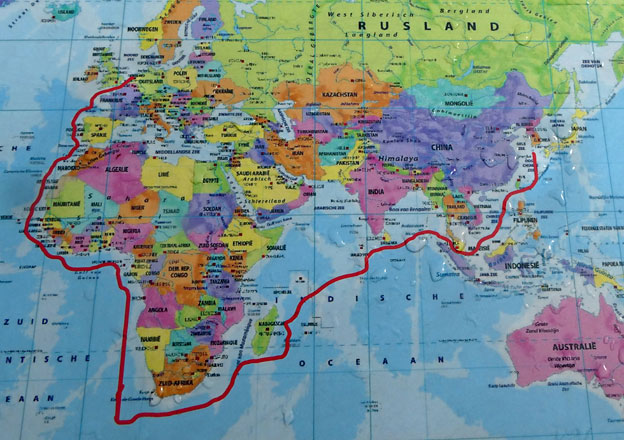
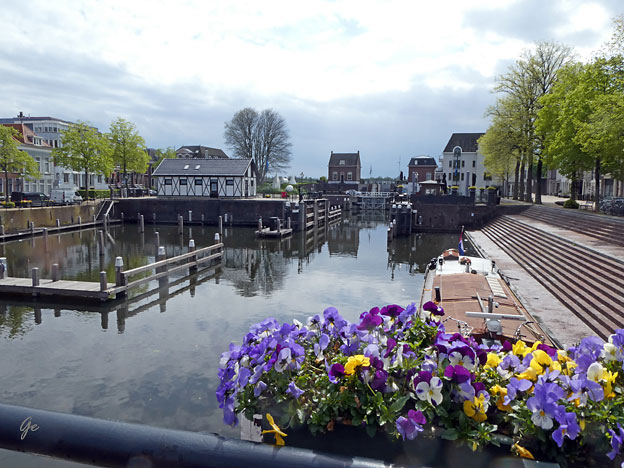
 |
Minnesmerket krigen 1940 - 1945 |
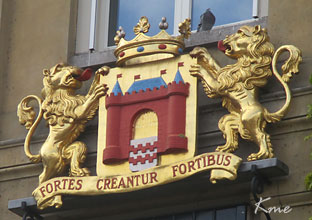 Internettoversettelse: De sterke skapes av de sterke Fra Rådhusplassen i Gorinchem |
 |
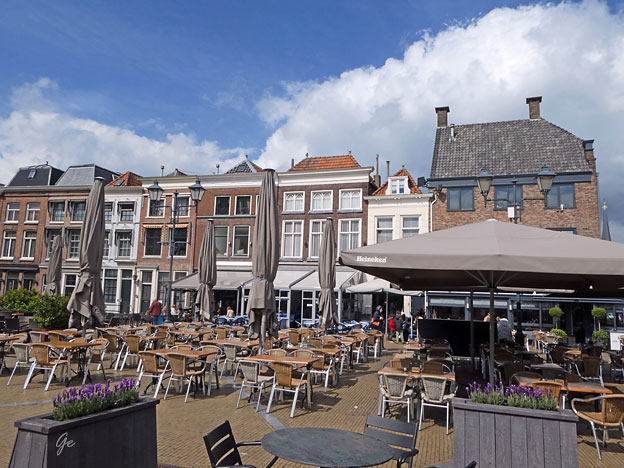
Rådhusplassen i Gorinchem
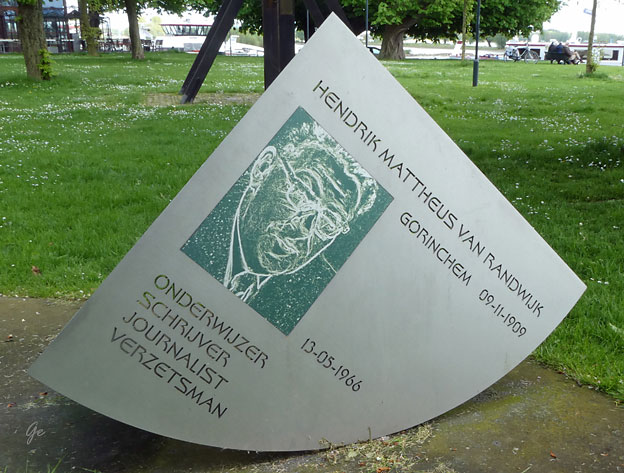
Til minne om Hendrik Mattheus van Randwijk
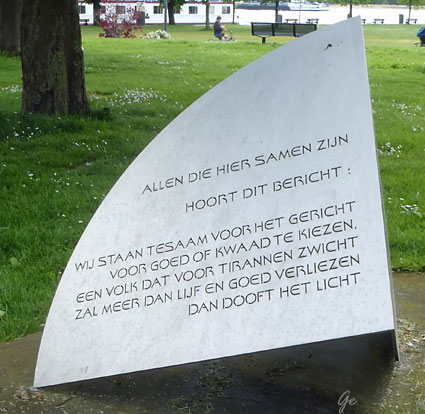 |
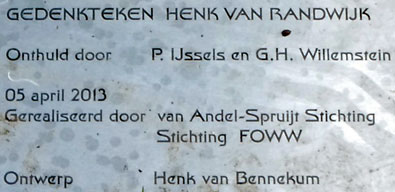 All who are gathered here hear this message: We stand for the right to choose right or wrong. A people that succumbs to tyrants will lose more than life and property, then the light will go out |

Bilde tatt fra Gorinchem

Kveld i Gorinchem
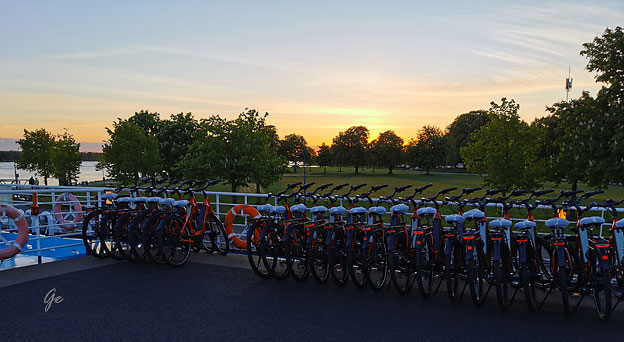
Tirsdag 23. april 2024
Gorinchem til Utrecht
I dag venter det dere en virkelig interessant og variert tur. Fra Gorinchem sykler dere via Leerdam - kjent for Leerdamer-osten - til den befestede byen Vianen. Her er det naturlig med en kort pause på en av de mange gatekafeene. Ta fergen for å krysse elva Lek, og fortsett syklingen til slusebyen Vreeswijk og dens smale gater. Herfra sykler dere videre til den lille byen Nieuwegein - ta kanskje en kort avstikke til forsvarsverket Fort Jutphaas som ligger gjemt i en grønn oase i Neiuwegein - før dere sykler mot dagens destinasjon, Utrecht.
Provinsen Utrecht betraktes som Nederlands hjerte. Byen ble bygget rundt katedralen som majestetisk markerer sentrum. Derfor er det nesten umulig å gå seg bort i denne bilfrie byen med de maleriske kanalene
ca 55 km
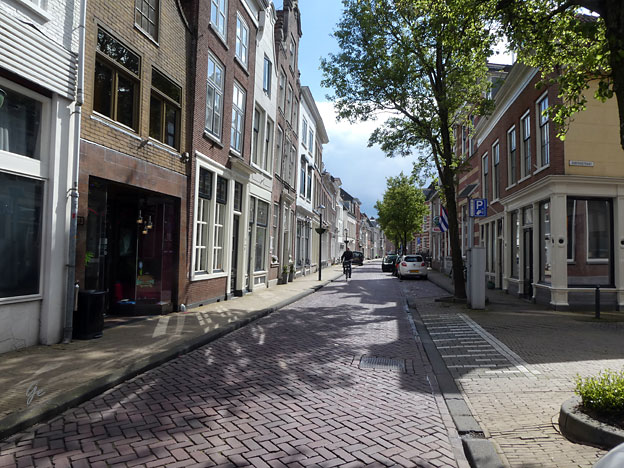
Dagens sykkeltur startet gjennom de lange gatene i Gorinchem.
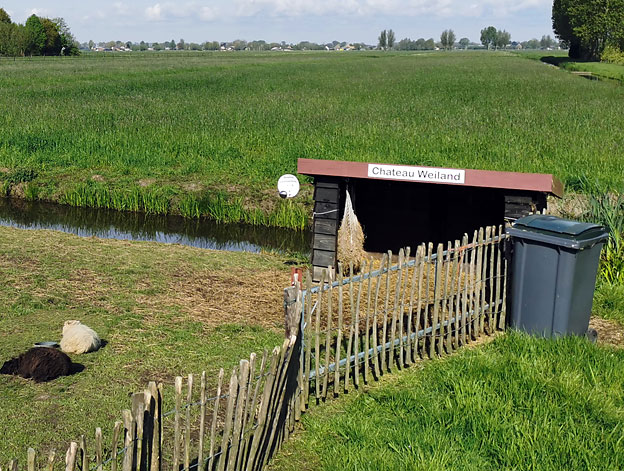
Chateau Weiland
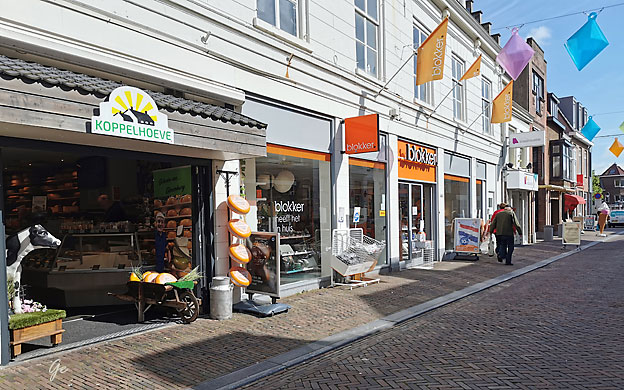
Ostebutikken Koppelhoeve i Leerdam.
Leerdammer is a Dutch semihard cheese made from cow's milk. It has an ageing time around 3–12 months. It has a creamy white texture and was made to be similar in appearance and flavor to Emmental. Its sweet and somewhat nutty flavour becomes more pronounced with age. It also has distinct holes. Advertisement campaigns have used the slogan "De lekkerste kaas tussen de gaten" ("the taste is around the holes").
Leerdammer - Wikipedia (9. mai 2024)
The south border of the town is formed by the river Linge. The name originates from a dam in the river Lede which was a branch from the river Linge towards Meerkerk.
Leerdam received city rights in 1407. The small river Linge, bordered by beautiful
water meadows, defines the atmosphere and tone of the landscape. Several centuries
ago Leerdam formed a part of the Vijfheerenlanden domain, before it was raised to
the level of County in 1498.
In 1551, Leerdam, together with Acquoy, became property of the House of Orange
and part of the County of Holland.
Since the 18th century, the town's culture has been strongly influenced by the glass industry and the timber industry. The glass currently manufactured in Leerdam is internationally known as Royal Leerdam or (particularly in respect
of designer glass and glass art) as Royal Leerdam Crystal. This, with the National Glass Museum, the Glass Centre (with its glassblowing and demonstration activities), and several art galleries, make Leerdam a major tourist attraction in
the Netherlands. (9. mai 2024)
Leerdam - Wikipedia
 Lunsj på Grand Cafe M`n Moeder |
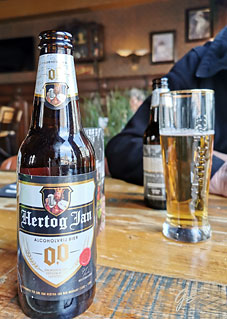 Hertog Jan |
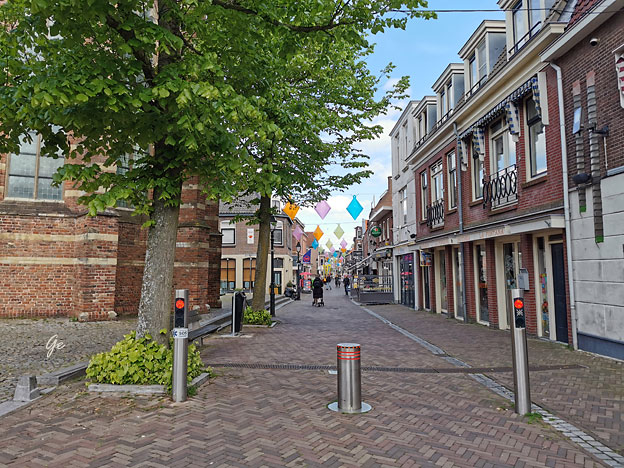
Gate i Leerdam
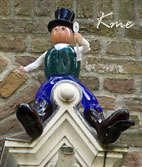
|
 |
This cruciform pseudo basilica was built around a Romanesque tower in the 13th century. Today, the nationally listed building is used by the Reformed Congregation of Leerdam.
Inside
the great church is a Ten Commandments plaque
donated by King and Stadholder William II and Mary
Stuart II. As count of Leerdam, William III was
officially in charge of the city's church. The
plaque is decorated with a shield-bearing lion for
England and a unicorn to bear the shield for
Scotland.
(9. mai 2024)
Great
Church in Leerdam | Visit Utrecht Region
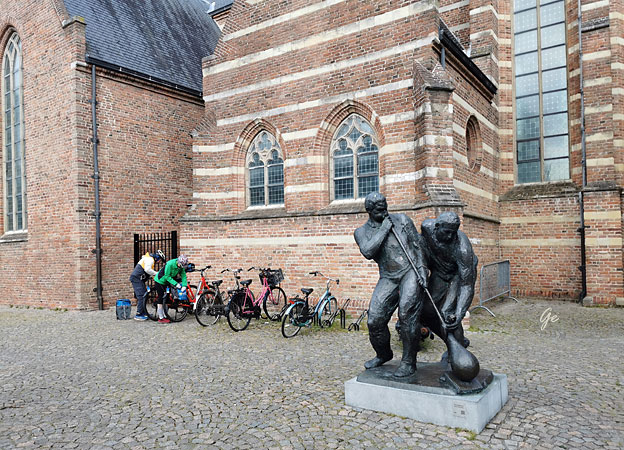

Vi sykler gjennom en golfbane.
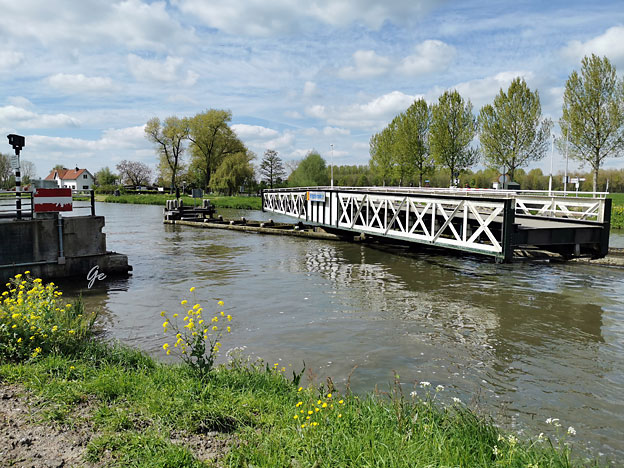
Svingebru
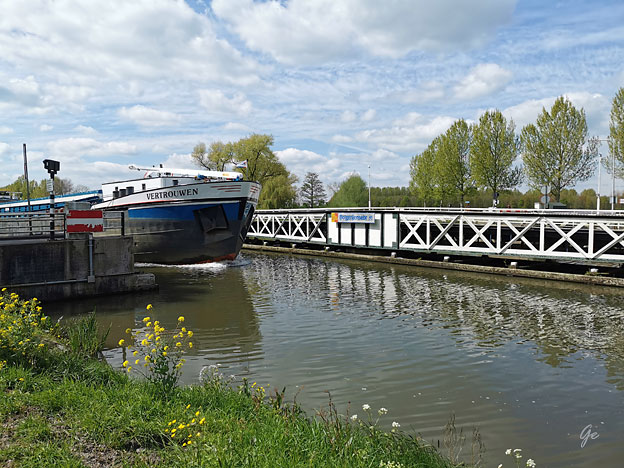
Stor båt er på vei

Da vi tar ferge over Lek, passerer Normandie (Skipet vårt)
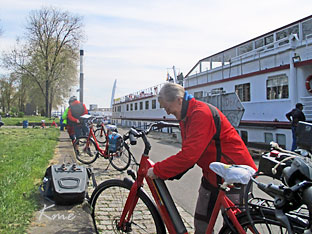 Framme i Utrecht. Sykkelvesker skal av og batteriet ut. Så kommer mannskapet og "parkerer" sykkelen. Vi var ikke inne i Utrecht sentrum. |
Utrecht's ancient city centre features many buildings and structures, several dating as far back as the High Middle Ages. It has been the religious centre of the Netherlands since the 8th century. In 1579, the Union of Utrecht was signed in the city to lay the foundations for the Dutch Republic. Utrecht was the most important city in the Netherlands until the Dutch Golden Age, when it was surpassed by Amsterdam as the country's cultural centre and most populous city. Utrecht - Wikipedia (9. mai 2024) |
Onsdag 24. april 2024
Fra programmet:
Utrecht til Schoonhoven
Denne morgenen må dere sørge for å ta dere tid til å utforske den vakre byen Utrecht før dere setter dere på syklene igjen.
Dagens etappe går gjennom vakkert polderlandskap, til Oudewater, som er en historisk viktig grenseby, fører dere tilbake fra provinsen Utrecht til Zuid-Holland. Her finner dere huset med den berømte heksevekta (ingen av de beskyldte heksene som ble veid her viste seg å være for lette, og derfor ble ingen av dem dømt). Dere sykler videre til Schoonhoven, som er kjent for sitt sølvmuseum, og for sin gamle karakteristiske nederlandske bydel.
ca 45 km
Vi jørte innom slottet Kasteel de Haar, noe som gjorde turen en mil lenger.
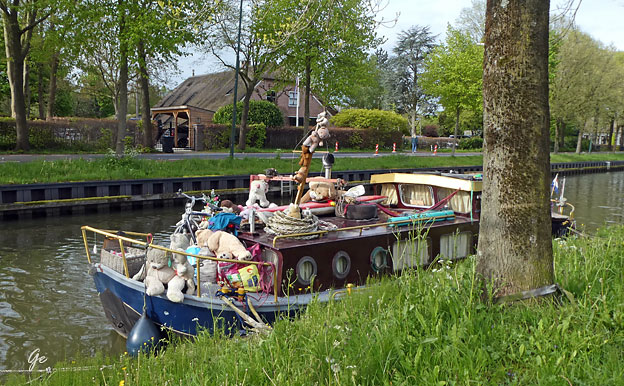
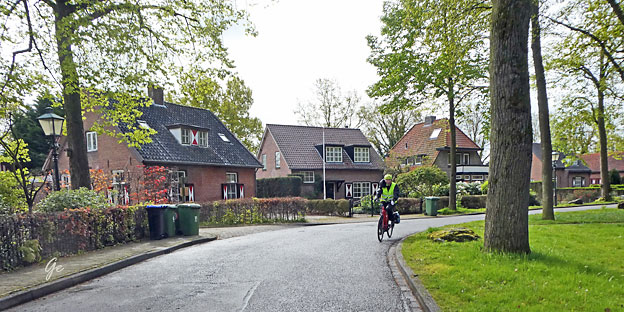
Haarzuilens village
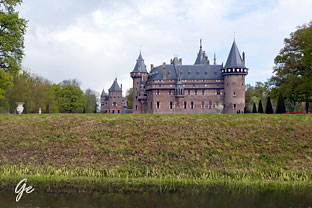 Kasteel de Haar |
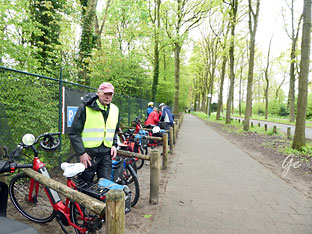 Sykkelparkeringen ved Kasteel de Haar. |
houses were grouped around a village green overgrown with large trees. The village had
an inn that also served as a council chamber. At the end of the 19th century you could buy
a ticket here to visit the picturesque ruins.
Around 1891, when the first concrete plans for the restoration of the castle were made,
there was talk of a relocating of the old Haarzuilens village, to allow for the creation of an
extensive park and hunting area. That is why the new Haarzuilens village was created 1,5 kilometres to the east. In 1898 the residents were able to move into their new houses.
a prominent place. In addition to houses, the townf also had a forge and a few shops. The
most striking building is "Het Wapen van Haarzuilens", which was designed both as an inn
and council chamber. It even has a prison cell! The village school is dedicated to St.
Boniface.
To this day, the De Haar estate, the extensive park and the castle village of
Haarzuilens form a total work of art that is unique in the Netherlands, a
green oasis of peace and quiet in an increasingly crowded and hectic country.
The village Haarzuilens | Kasteel de Haar (9. mai 2024)
 The first date of Kasteel de Haard dates back to 1391. When Baron Etienne van Zuylen van Nijevett van de Haar inherited the estate from his father at the end of the 19th century, it was badly dilapidated. Mester architect Pierre Cuypers restores and rebuilds the castle between 1892 and 1912. For more than a century, the tradition existed that Castle de Haar was inhabited by the van Zuylen family for one month a year, in September. Celebrations of prominent guests such as Coco Chanel, Maria Calas and Yves SaintLaurent were the centerpiece |
Den
første datoen for Kasteel de Haard dateres tilbake til 1391. Da baron Etienne van Zuylen van Nijevett van de Haar arvet eiendommen fra sin far på slutten av det 19. århundre, var den sterkt falleferdig. Mesterarkitekt Pierre Cuypers restaurerer og gjenoppbygger slottet mellom 1892 og 1912. I mer enn et århundre eksisterte tradisjonen at Castle de Haar ble bebodd av van Zuylen-familien i en måned i året, i september. Feiring av fremtredende gjester som Coco Chanel, Maria Calas og Yves Saint Laurent var midtpunktet |
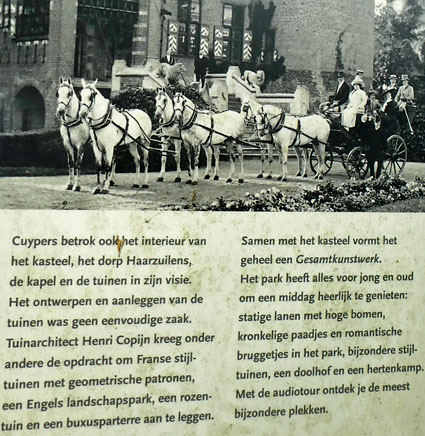 |
Cuypers
inkluderte det indre av slottet, Haarzuilens
port, kapellet og hagene i sin visjon. Utformingen og byggingen av hagene var ikke en enkel sak. Landskapsarkitekt Henri Copijn fikk også i oppdrag å lage hager i fransk stil med geometriske mønstre, en engelsk landskapspark, en rosehage og en buksbomparterre Sammen med slottet utgjør heleheten et kunstverk. Parken har alt for unge og gamle å nyte en ettermiddag: staselige avenyer med høye trær, svingete stier og romantiske broer og parken, hager i spesiell stil, en labyrint og en hjortepark. Med lydturen vil du oppdage de mest spesielle stedene. |
Together with the castle, it is a work of art. The park has everything for young and old to enjoy an afternoon: stately avenues with tall trees, winding paths and romantic bridges and the park, special style gardens, a maze, and a deer park. With the audio tour you will discover the most special places.
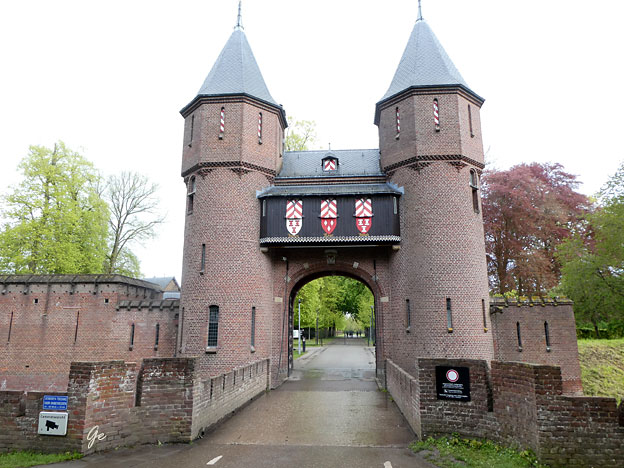
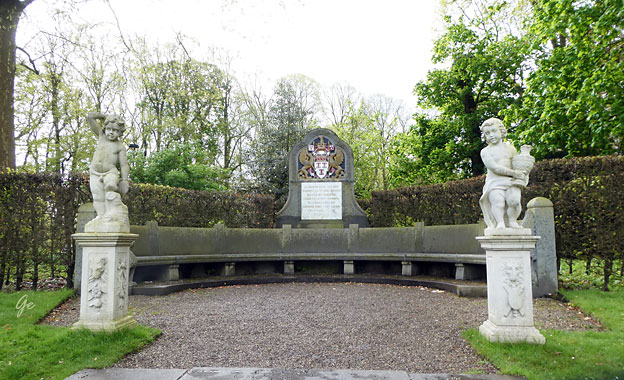
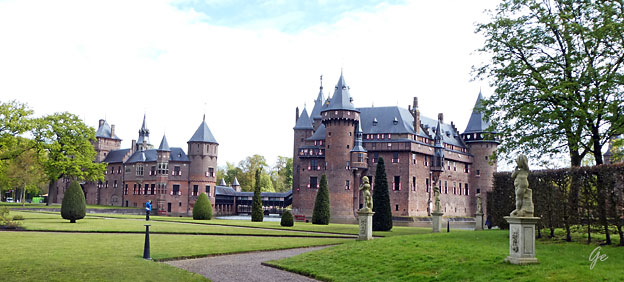
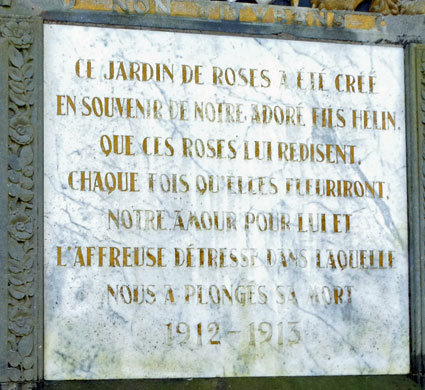 |
This
rose garden was created in memory of our beloved
son Helin, whom these roses tell him every time
they bloom. Our love for the awful defresse into
which his death plunged us
Denne rosehagen ble skapt til minne om vår elskede sønn Helin, disse rosene forteller om ham hver gang de blomstrer. Vår kjærlighet til den forferdelige sorg som hans død kastet oss inn i. |
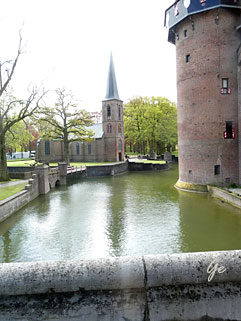 |
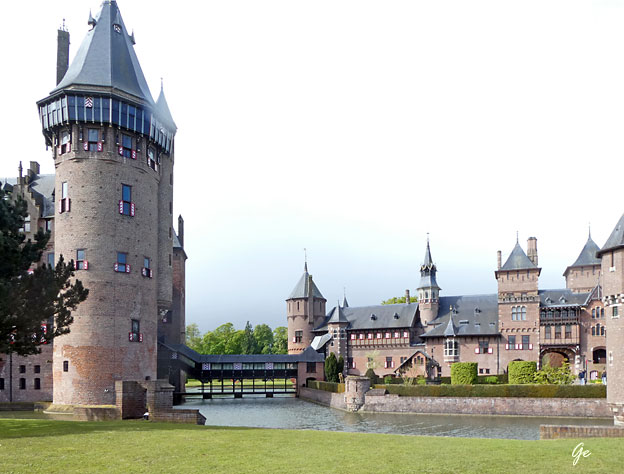 |
1391. In that year, the De Haar family received the castle and the surrounding lands as a fiefdom from Hendrik van Woerden. The castle remained in the ownership of the De
Haar family until 1440, when the last male heir died childless. The castle then passed to the Van Zuylen family.
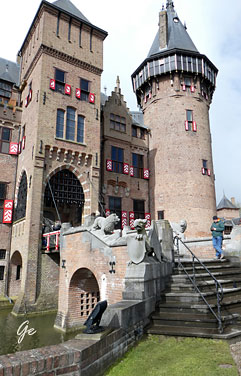 |
In 1482, the castle was burned down and the walls were destroyed, except for the parts that did not have a military function. In 1887, Jean-Jacques' grandson, Etienne Gustave Frédéric Baron van Zuylen van Nyevelt van de Haar (1860–1934), married Baroness Hélène de Rothschild, of the Rothschild family. When Etienne inherited the ruined castle in 1890 from his grandfather, the couple set about rebuilding the castle, fully financed by Hélène's family. De Haar Castle - Wikipedia (10. mai 2024) |

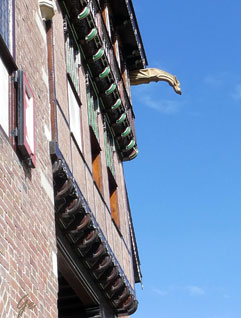 |
 |
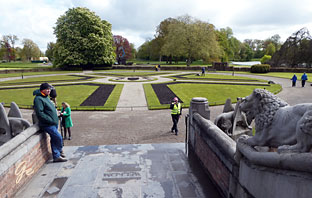 |
Internet translation of what is
written on the column. Our son's beauty was wonderful. The tomb, however, was to swallow him up in the garden. There is no high cypress that the event of death does not end up uprooting and no longer intended. to see so many roses on earth, since so many rosy-cheeked young men sleep there eternally. 1912-1913 |
the city of Utrecht, Van Zuylen bought a house and demolished it. The park contains
many waterworks and a formal garden reminiscent of the French gardens of Versailles. During the Second World War many of the gardens were lost, because the wood was
used to light fires, and the soil was used to grow vegetables. Today most are restored
to their original state.
For the decoration of the park, the village Haarzuilens, except for the town church,
was demolished. The inhabitants were moved to a place a kilometre away, where a
new Haarzuilens arose and where they lived as tenants of the lord of the castle. This
new village was also built in a pseudo-medieval style, including a rural village green.
The buildings were for the most part designed by Cuypers and his son Joseph Cuypers.
Since 2000, the estate is partly owned by Natuurmonumenten.
De Haar Castle - Wikipedia (10. mai 2024)
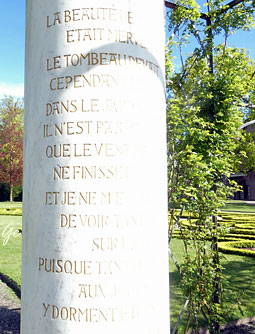 |
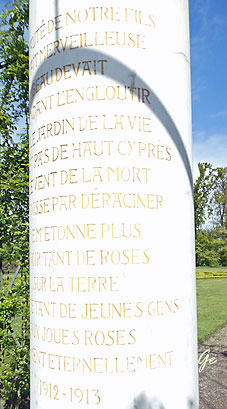 |
Vår sønns skjønnhet var fantastisk. Graven skulle imidlertid sluke ham i hagen. Det er ingen høy sypress at dødshendelsen ikke ender opp med å rykke opp med roten og ikke lenger ment. å se så mange roser på jorden, siden så mange rosenrøde unge menn sover der evig. 1912-1913
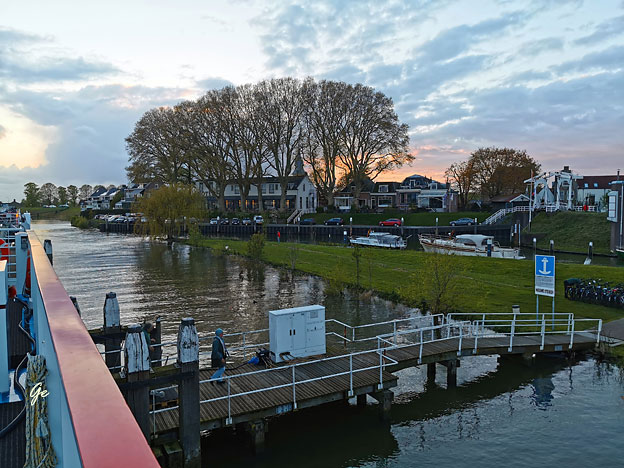
Solnedgang i Schoonhoven
Schoonhoven
c. 1220 a castle was built on the north side of a small stream called "Zevender",
near its mouth at the Lek River. The city of Schoonhoven was then formed near
the castle. The oldest reference to the city is in a document from 1247, where it
is referred to as Sconhoven. In 1280, it was granted city rights.
Around 1350, city walls and gates were constructed. The city's economy
depended on shipping, brewing, fishing and agriculture. Schoonhoven was also
the marketplace for the region. In 1518, the castle burned down and its
remnants were removed in subsequent decades.
Schoonhoven is known for its silver and therefore carries the nickname: Zilverstad ("Silver City"). Since the 17th century, silver and gold
smiths have been working here. Today, Schoonhoven is still known for its silver.
It is the host of "Het Nederlands Zilvermuseum" (the Dutch Silver Museum) and
the International Silver School.
Schoonhoven - Wikipedia (10. mai 2024)
Torsdag 25. april 2024
Fra programmet:
Schoonhven til Rotterdam
Fra Schoon hoven kan dere sykle til byen Gouda, som er berømt for osten sin.
I godt vær kan dere ta en avstikker til sjøen Reeuwijse, plassen for en
forfriskende dukkert.
ca 45 km
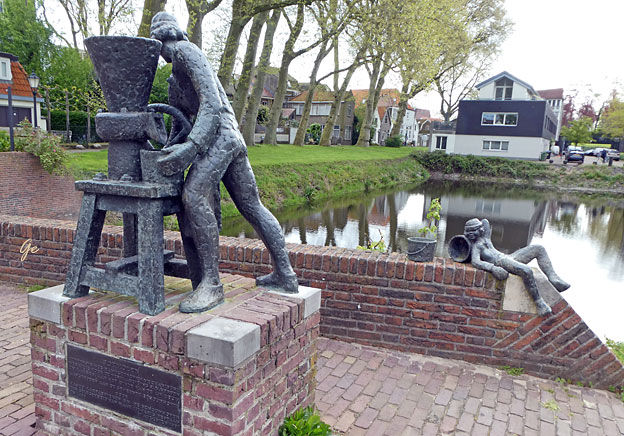
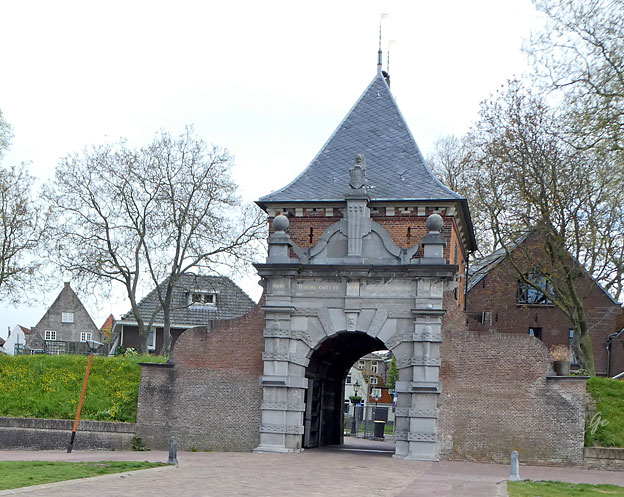

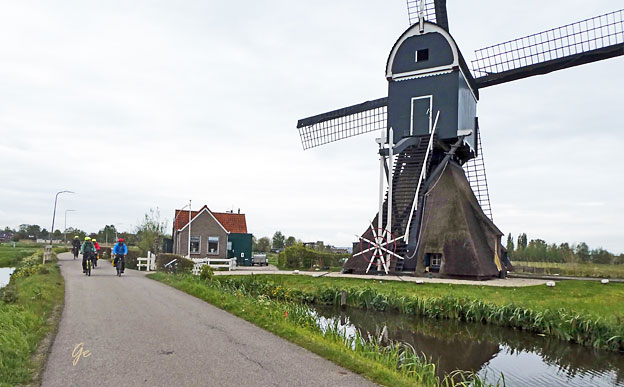
For almost 400 years, since 1600, this seesaw mill of the Bonrepas and Noord-Zevender polders has been drained. The paddle wheel at the rear can grind the polder water up a metre to the Vilst.
In 1973 the mill was thoroughly restored and the upper house was replaced. Important parts were also replaced in 2004. The mill is a national monument and is the only polder mill that is still owned by Hoogheem raadschap De Stiehte Rijnlanden.
The mill does not play a role in the water management of the area, but is kept running by the willing miller. Since 1987, the Koekok pumping station has kept this part of the Lopikerwaard dry. It can drain 6500 hectares, fifteen times as much as the mill.
 |
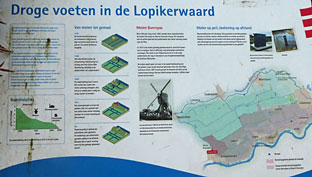 1. 1150 Dry feet in the Lopikerwaard. The first farmers reclaimed and drained the swampy peat land by digging ditches. This is how agriculture becomes possible. 2. 1450 The peat settles in due to the drainage. The land is now too low for natural drainage. Fortunately, the polder mill has just been invented! |
Subsidence continues. A mill can shovel water up a meter;
So you need more and more to keep your feet dry.
4. 1871
The steam pumping station conquers the polders. Such a pumping station
can pump the water up two meters and is as powerful as three mills!
5. Nu
Right away. Today, power is the power source for pumping stations. The electric pumping stations are operated remotely, which is why no more houses will be built near the pumping station.
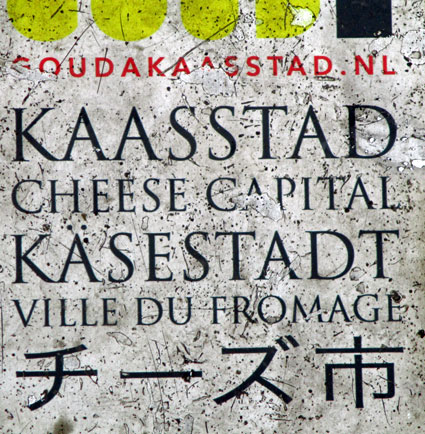 Gouda, South Holland - Wikipedia ( 10. mai 2024) |
In the Middle
Ages the Van der Goude [nl] family founded a settlement at the location of the current city and built a fortified castle alongside the banks of the Gouwe River, from which the family and the city took their names. Locals long called the settlement Ter Goude, or Tergou or Tergouw [nl] for short. The area, originally marshland, developed over the course of two centuries.[timeframe?] By 1225, a canal was linked to the Gouwe and its estuary became a harbour. in 1272 Floris V, Count of Holland granted the town city rights. |
 The church is dedicated to John the Baptist, the patron saint of Gouda, and was built during the 15th and 16th centuries. In 1552 a large part of the church burned, including the archives. Most information of the early period is taken from the diaries of Ignatius Walvis. Around 1350 a tower was built (only the lower part remains). In 1485 the foundation was built for the present-day choir. This expansion made the church the longest in the Netherlands, with a length of 123 meters. Sint Janskerk - Wikipedia (10. mai 2024) |
 In the summer of 1438, a major city fire caused serious damage to the Town Hall. The city council decided that the new town hall should be free and chose the market field, then still a swampy peat bog, as the new location. On the right-hand side façade, you can see the chimes with the mechanical puppets, installed in 1961. The protagonist of the puppet show is Floris V, who granted Gouda city rights in 1272. Every two minutes, on the half-hour and full-hour, you are treated to a beautiful spectacle. The Town Hall - Welcome to Gouda (10. mai 2024) |

 |
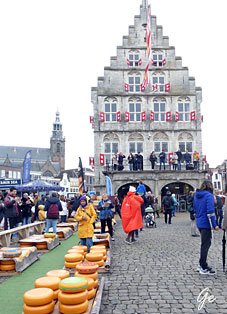 |
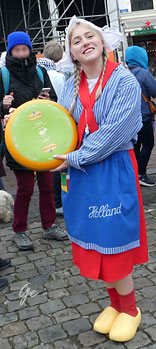 |
 |
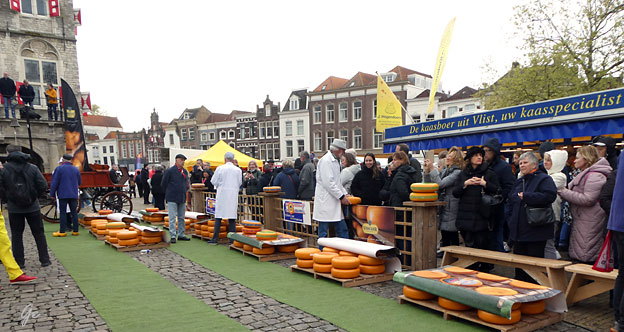

 |
The first mention of Gouda
cheese dates from 1184, making it the oldest recorded cheeses in the world still produced today with the same recipe. The cheese is named after the city of Gouda, South Holland, not because it was produced in or around that city, but because it was traded there. In the Middle Ages, Dutch cities could obtain certain feudal rights which gave them primacy or a |
acquired market rights on cheese, the sole right to have a market in which the county's farmers could sell their cheese.
Gouda cheese - Wikipedia (10. mai 2024)
| Fredag 26. april 2024
Programmet for dagen hadde forslag om to sykkelturer. En til Delft og en til den Haag og Scheveningen. Vi valgte å bli i Rotterdam for å se mer på byen. de Boeg At the entrance of Leuvenhaven, on the riverbank of the Maas, stands the de Boeg monument, dedicated to the Dutch Merchant Navy. The monument was created by Fread Carasso to honor the sailors who lost their lives at sea during World War II. Around 500 Dutch merchant ships were sunk, resulting in the loss of approximately 3,500 sailors. These ships were involved in transporting soldiers, weapons, and food to England and Russia. The monument symbolizes rebirth after liberation. It consists of a stylized 46-meter-tall ship’s bow cutting through concrete waves. de Boeg (rotterdam360.com) (11. mai 2024) Skulpturen The Bow, Frederico
Carusso (1957-1965)
Built in memory of
the many soldiers and civilians who died at
sea during the World War II, Frederico
Carusso’s The Bow is an imposing
figure on the Rotterdam skyline, and
a bleak reminder of the devastation of war.
Forty-six metres high, the monument originally
consisted of a towering column representing a
ship’s bow, cutting through concrete waves.
When it was unveiled in 1957, the sculpture
received mixed criticism, and Carusso was
asked to add a human element to the monument
in order to emphasize the idea of human loss.
In 1965, the final monument was unveiled, now
with five bronze figures huddled against the
bow, one helmsman, three sailors and a drowned
man.
10 Unmissable Public Sculptures In Rotterdam (theculturetrip.com) (11. mai 2024) |
 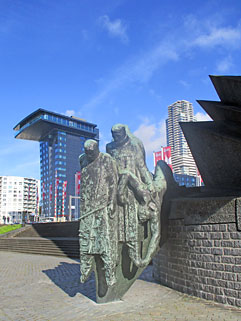 |
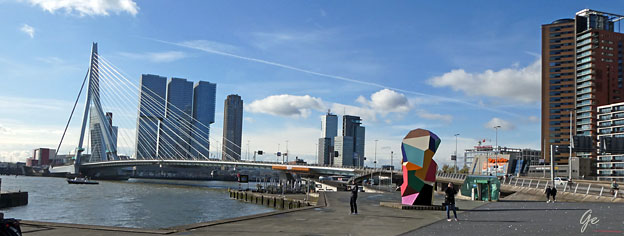
The Erasmusbrug (English: "Erasmus Bridge") is a combined cable-stayed and
bascule bridge, construction began in 1986 and was completed in 1996. It crosses the Nieuwe Maas in the centre of Rotterdam, connecting the north and south parts
of this city, second largest in the Netherlands. The bridge was named in 1992 after Desiderius Erasmus, a prominent Christian Renaissance humanist also known
as Erasmus of Rotterdam. The Erasmus Bridge is Rotterdam's most important landmark and is even part of the city's official logo.
Erasmusbrug - Wikipedia (11. mai 2024)
Skulpturen
Marathonbeeld van Henk Visch is een geschenk van de Stichting Rotterdam Marathon
aan de stad. Het beeld staat langs de looproute, aan de voet van de Erasmusbrug. Op de sokkel staan de namen vermeld van de lopers die ooit gewonnen hebben, en er is plaats
voor die van hen die nog gaan winnen.
Marathonbeeld - Sculpture International Rotterdam (11. mai 2024)
Henk Visch's Marathon Sculpture is a gift from the Rotterdam Marathon Foundation to the city. The statue is located along the walking route, at the foot of the Erasmus Bridge. On the pedestal are the names of the runners who have ever won, and there
is room for those who are still to win.
(Google-oversettelse)
 |
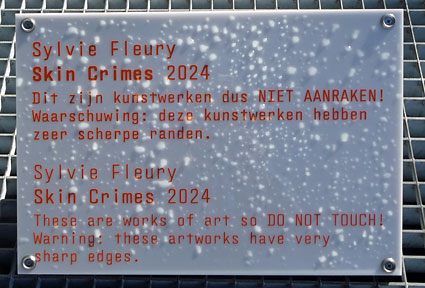 |
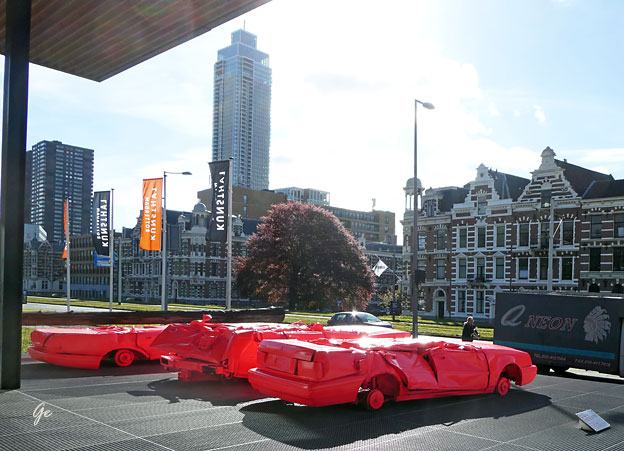
Kunsthal Rotterdam
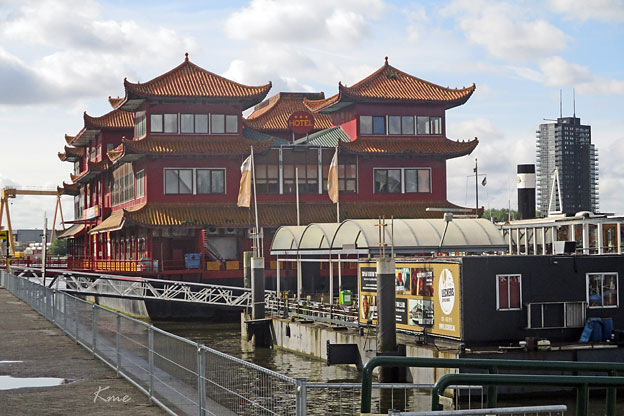
Amazing Oriental Rotterdam Parkhaven
 |
 Home - Euromast Rotterdam |
Euromast is an observation tower in Rotterdam, Netherlands, designed by Hugh Maaskant constructed between 1958 and 1960. It was specially built for the
1960 Floriade, and is a listed monument since 2010.
Euromast - Wikipedia (11. mai 2024)

Euromast
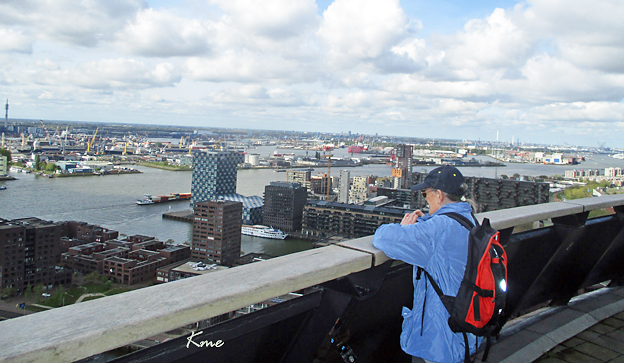
Utsikt fra Uromast
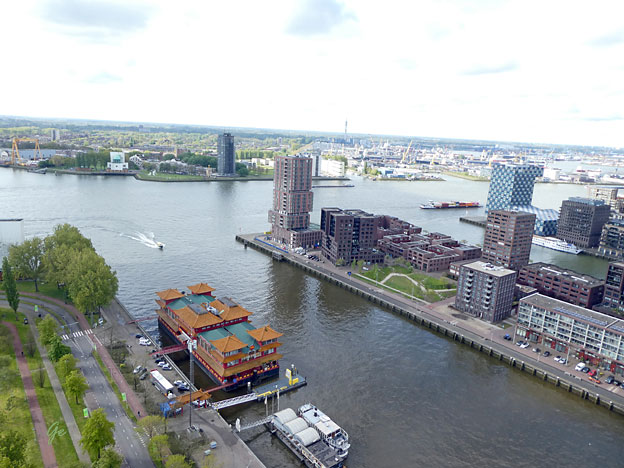
Utsikt fra Euromast
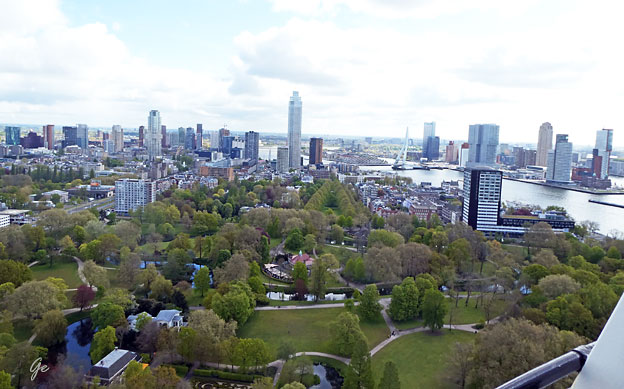
Utsikt fra Euromast

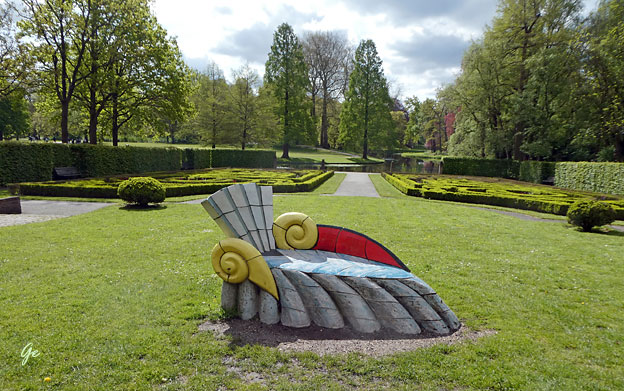
The Park, also Park van Zocher, Park at the Euromast
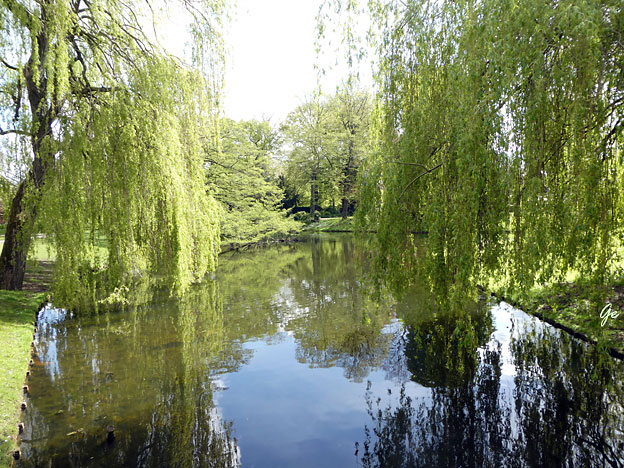
The Park, also Park van Zocher, Park at the Euromast is a park in Rotterdam in the Scheepvaartkwartier that was created in several phases between 1853 and 1900.
The Park is located between the Nieuwe Maas, the Parkhaven, and the Westzeedijk. On the Oude Plantage, this is the oldest park in Rotterdam. Since December 2010, the Park has had the status of a national monument.
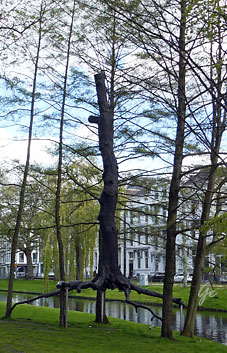 |
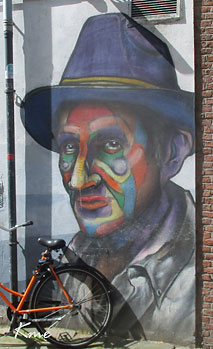 |
The Park looks
like a whole, but it actually consists of two parts.
This is because it was built on the spot where there
used to be two country estates. The eastern half,
where Parkzicht is now located, was the country estate
of J. Valckenier. It was built between 1852 and 1863
to a design by the Zocher company. The design of the
Park was by Jan David Zocher Jr. and his
son Louis Paul Zocher from the year
1852, based on the principles of the English
landscape style.
The western part, where the Heuvel estate was located,
was owned by J.A. Nottebohm until 1866 and was added
to the Park around 1886 with some modifications. The
border between the two country estates ran where the
Rhododendronallee is now located.
Het
Park (Rotterdam) - Wikipedia, the free encyclopedia
(11. mai 2024)
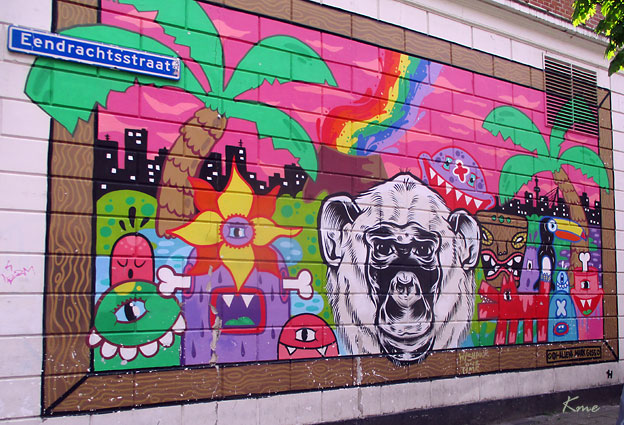
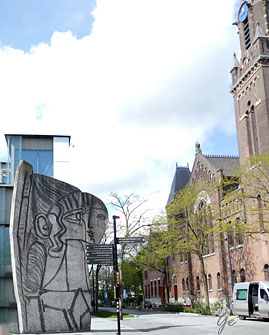 Sylvette skulpturen ved Arminiuskerk |
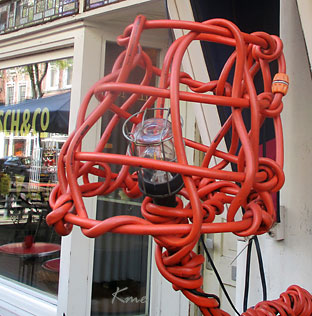 |
Sylvette - Wikipedia (11. mai 2024)
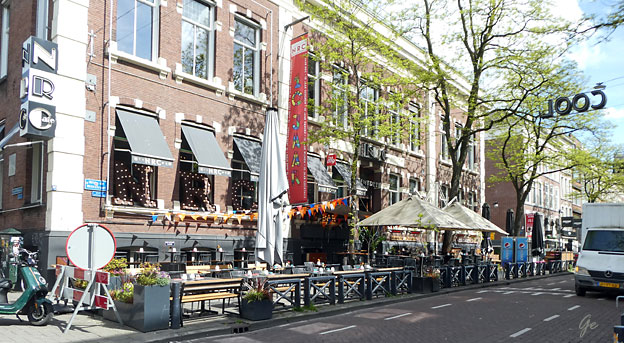
Witte de Withstraat
The Witte de Withstraat is brimming with life with its hip bars and eateries.
You’ll also find many art galleries and cultural centers like Witte de With
Center for Contemporary Art.
Witte de Withstraat | City Rotterdam | City Guide (11. mai 2024)
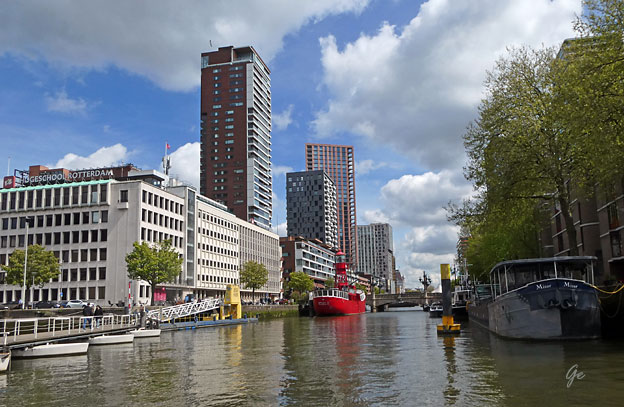
Lightvessel, Rotterdam. Lightvessel No.11 was a lightvessel that was in
service in the Irish Sea between 1951 and 1988.
Lightvessel, Rotterdam editorial photo. Image of lamp - 83735586 (dreamstime.com)
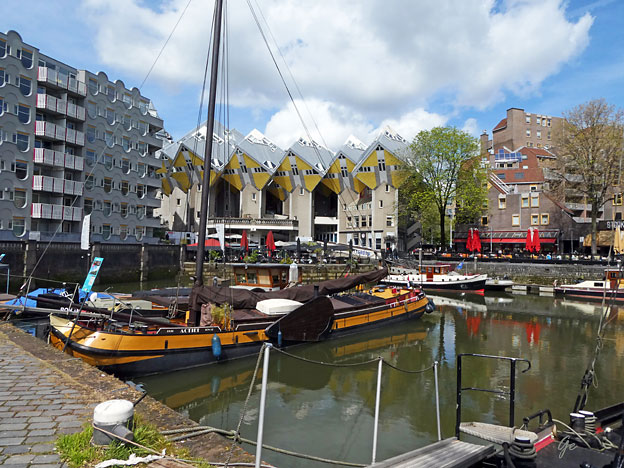
Cube houses (Dutch: kubuswoningen) are a set of innovative houses built in Helmond and Rotterdam in the Netherlands, designed by architect Piet Blom and
based on the concept of "living as an urban roof": high density housing with sufficient
space on the ground level, since its main purpose is to optimise the space inside.
Blom tilted the cube of a conventional house corner upwards, and rested it upon a
hexagon-shaped pylon.
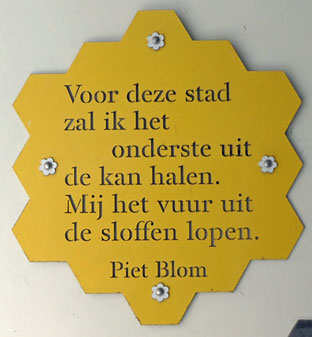 Jeg vil gjøre alt jeg kan for denne byen. Jeg skulle gå tom for damp. Piet Blom I will do everything I can for this city. I was going to run out of steam. Piet Blom |
 De stadig voksende byene i verden vil bli såret landsby for landsby. Piet Blom The ever-growing cities of the world will be wounded village by village. Piet Blom |
His design represents a village within a city, where each house represents a tree,
and all the houses together, a forest. The central idea of the cube houses around
the world is mainly optimizing the space, as a house, to a better distribution of
the rooms inside.
Cube house - Wikipedia (11. mai 2024)


A bascule bridge (also referred to as a drawbridge or a lifting bridge) is a
moveable bridge with a counterweight that continuously balances a span,
or leaf, throughout its upward swing to provide clearance for boat traffic.
It may be single- or double-leafed.
Bascule bridge - Wikipedia (11. mai 2024)
The characteristic and historic Oude Haven (Old Harbour) attracts many tourists and students. In the summer the Oude Haven is one of the most popular areas for a terrace.
Most bars and terraces are situated in front of the iconic Witte Huis that has great
views over the Oude Haven. During the summer evenings the Oude Haven really comes
alive when the terraces are crowded with people.
The Oude Haven is one of the oldest harbours of Rotterdam. Probably the first jetty was established here around 1350. About 1900 the Port of Rotterdam was largely based around the Oude Haven and the Boompjes at the river. The area was completely destroyed as a result of of the bombardment of May 1940 and only a few buildings here actually did survive.
Oude Haven Rotterdam | City Rotterdam | City Guide Rotterdam (11. mai 2024)
Hjemreise. Båten måtte forlates senest klokka 9.
Fra båten skulle vi og flere andre ha taxi til jernbanestasjonen,
men det var vanskelig å få tak i nok biler.
Noen måtte gå en del av veien
Hjemreise videre med KLM til Gardermoen, og Vy/Ruter derfra
 |
Kings
Day |
Koningsdag or King's Day is a national holiday in the Kingdom of the Netherlands. Celebrated on 27 April (26 April if the 27th is a Sunday), the date marks the birth of
King Willem-Alexander.
When the Dutch monarch is female, the holiday is known as Koninginnedag (Dutch pronunciation: or Queen's Day and, under Queen Beatrix until 2013, was celebrated
on 30 April. She prolonged the tradition that was born under her mother’s reign:
Queen Juliana’s (Queen of The Netherlands from 1948 till 1980) birthday was on
April 30th.
The holiday was initially observed on 31 August 1885 as Prinsessedag or Princess's
Day, the fifth birthday of Princess Wilhelmina, then heir presumptive to the Dutch
throne. On her accession in November 1890 the holiday acquired the name
Koninginnedag, first celebrated on 31 August 1891. In September 1948, Wilhelmina's daughter Juliana ascended to the throne and the holiday was moved to her birthday,
30 April. The holiday was celebrated on this date from 1949.
Flea market
The vrijmarkt (literally 'free market') is a nationwide flea market, at which many people sell their used goods. Koningsdag is the one day of the year that the Dutch government permits sales on the street without a permit and without the payment of value added tax.
Festivities
Koningsdag now sees large-scale celebrations, with many concerts and special
events in public spaces, particularly in Amsterdam.
Those taking part in Koningsdag commonly dye their hair orange or wear orange clothing in honour of the House of Orange-Nassau, which rules over the
Netherlands. Orange-coloured drinks are also popular
In recent years parties and concerts have been held the evening before Koningsdag. Until 2013, nightclubs across the Netherlands organised special events for what became known as Koninginnenacht (Queen's Night). Many young people celebrate
in the streets and squares (and in Amsterdam, the canals as well) throughout the night, and after all-night partying join the crowds at the vrijmarkt.
Children celebrate with
a variety of games including koekhappen (in
which they
catch spice cake dangling from a string in their
mouths) and spijker poepen (in
which they tie string around their waist with a nail
dangling at one end, which
they attempt to lower into a glass bottle).
Koningsdag
- Wikipedia (11. mai 2024)